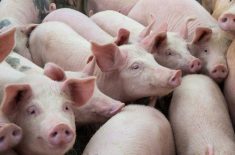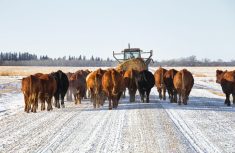Sweltering heat has slowed beef consumption on the restaurant and retail level. Top Alberta slaughter prices were reported at $97/cwt, down $7/cwt to $10/cwt from last week with many feedlots holding back on sales. U.S. fed prices were also $3 softer with cattle moving at $108/cwt in Kansas.
A healthy group of professionally backgrounded exotic heifers averaging 750 pounds sold for $125/cwt in southern Alberta. Central Alberta steers averaging 730 pounds sold for $132/cwt. Overall auction market volumes were very thin with many rings still in holiday mode. Red ink is flow more heavily amongst all feedlot operators as breakevens are now a solid $9 above current market prices. Buyers will be cautious as the yearling run starts next week. Feedlots realize the chances of making money when purchasing feeder cattle at historical highs are very slim.
Read Also

U.S. livestock: ‘Cattle on feed’ report supports prices
Chicago cattle futures rose as the USDA’s ‘Cattle on Feed’ report showed inventories two per cent down from a year…
The USDA cattle on feed report shocked the feeder cattle market. Feedlot placements during June were up 4.2 per cent over last year; analysts were forecasting a drop of 6.5 per cent. We now find the extreme heat causing a surge in feeder cattle sales. Kansas, Oklahoma and Midwestern States appear to be running out of pasture at the same time. U.S. feedlots are also bleeding as they market expensive feeders from spring.
Midwest feeder cattle prices were $8 to $12 lower last week and the market appears to be shrugging of the USDA cattle inventory report. The 2011 U.S. calf crop is expected to be down a meager one per cent from 2010, which is virtually unchanged.
Given the recent placements and current sales pace, the U.S. industry is asking “where are all these cattle coming from?” Fourth-quarter beef production may be larger than anticipated and the market will rely on stronger demand to maintain the current price structure.
Jerry Klassen is a commodity market analyst in Winnipeg and maintains an interest in the family feedlot in southern Alberta. He writes an in-depth biweekly commentary, Canadian Feedlot and Cattle Market Analysis, for feedlot operators in Canada. He can be reached by email at [email protected] or at 204-287-8268 for questions or comments.















